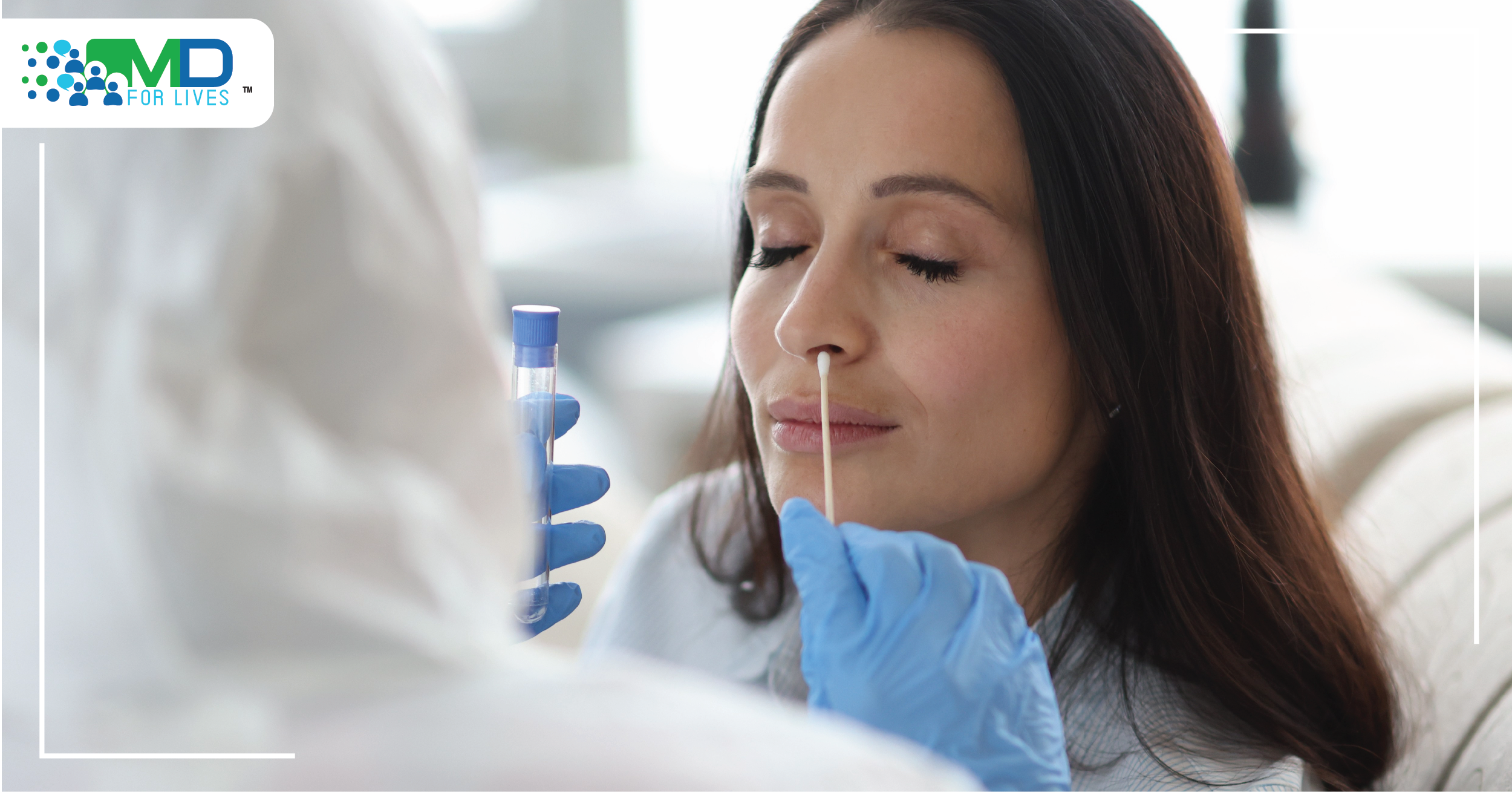In a span of 8 months since the start of the pandemic, there are already more than 21 million confirmed cases of COVID-19 around the world with deaths reaching up to 800,000. The surge of cases is so overwhelming that the healthcare industry of some countries is already at their limits. Aside from that, the global economy is also suffering due to the abrupt halt of businesses. It is estimated that the losses would range from $5.8 trillion to $8.8 trillion worldwide. The devastating effects of the pandemic will keep growing if it does not get appropriately managed.
Managing COVID-19 does not mean getting rid of it completely. Examples of diseases that are being appropriately managed are tuberculosis, AIDS, influenza, SARS, etc. The main difference between the current condition with the others is that COVID-19 does not have a vaccine, yet. The presence of it would greatly help in managing the spread of the virus.
Where is the vaccine?
The ultimate weapon to combat COVID-19 is the development of a vaccine. However, vaccines do not come that easy. First of all, it costs a lot of money. It is estimated that around $500 million is needed to fund the research and development process of a vaccine. Second, it would take a lot of time. Countless trials, research, and testing are done to ensure that a vaccine is safe and working. In addition to this, different facilities and factories are built from scratch for the sole purpose of producing the vaccine. Usually, it would take at least ten years to finish the whole process. But these are not the normal times, the world is in the middle of a pandemic and needs one to be developed as soon as possible.
Researchers are hoping to develop the COVID-19 vaccine in a span of 12 to 18 months. It might seem a bit too optimistic but not impossible. One way to achieve this goal is by letting everyone join the race in the development of vaccines. Hundreds of drugs from different companies and pharmaceuticals are being studied to determine which has the potential to be a vaccine.
Different COVID-19 vaccines
A suitable vaccine needs to have two qualities: efficient and safe. It should be able to trigger an immune response from the body, but at the same time, do not cause severe side effects that might result in death. Currently, around 30 vaccines are already in clinical trials and are being tested on people. Out of these, five vaccines seem to be in the lead for global use. They are already under the Phase III trial and are being tested on thousands of people.
The University of Oxford together with the pharmaceutical company AstraZeneca are testing a vaccine currently called ChAdOx1 nCoV-19 but commonly called Oxford vaccine. It was able to trigger a similar immune response from the body when infected by SARS-CoV-2. However, the participants reported some mild effects such as muscle ache and chills. The vaccine is expected to be tested to almost 50,000 people from different parts of the world.
Another vaccine candidate is developed by Sinovac Biotech from Beijing. The vaccine is called PiCoVacc and showed promising results in early clinical trials. PiCoVacc is made up of inactivated or dead SARS-CoV-2 virus as opposed to Oxford vaccine, which uses only weakened alive adenovirus, which is different from SARS-CoV-2. The company will soon test PiCoVacc on elderly and then on children.
Candidate vaccine mRNA-1273 which is developed by U.S. biotech company Moderna and the National Institute of Allergy and Infectious Disease (NIAID) is totally different from traditional vaccines. Instead of using dead or weakened viruses, Moderna uses mRNA. It has several advantages, such as easier to manufacture and is more resistant to the mutation of the virus. However, reports show that more than half of the participants experienced severe side effects such as fatigue, chills, severe fever, nausea, and fainting.
Pfizer, together with German biotechnology company BioNTech and Fosun Pharmaceutical, are also developing a vaccine through the use of mRNA. Unlike Moderna’s, theirs did not cause any severe side effects while still being able to trigger an immune response. Countries such as the U.S. and U.K. arranged an agreement with the company to produce 500 million doses of the vaccine if further research deemed it safe and effective.
CanSino Biologics, together with Beijing Institute of Biotechnology, developed a vaccine pretty similar to Oxford vaccine’s process. It shows promising results, with 95% of the participants showing a similar immune response when a body is infected by SARS-CoV-2. In addition to this, there were only very mild side effects, such as light fever and fatigue.
In a span of a few months, researchers around the world were able to develop candidate vaccines that showed promising results. This never-before-seen feat shows the excellence and capability of researchers from the health and medical industry. It might seem that the pandemic situation is only getting worse, but don’t lose hope and give these researchers a few more time. The vaccine is on its way.








10 Comments
Psychology of Isolation: How Quarantine Affects the Mental Health
5 years ago[…] of writing, there is no cure or vaccine for the feared COVID19 virus. With that, the world is still filled with uncertainty; even the length of quarantine is unsure at […]
World Immunization Week 2020: How Covid-19 Vaccines work
5 years ago[…] safe and potent vaccine. Scientists around the world are working nonstop in developing and testing Covid-19 vaccines that might work against the […]
World's No Tobacco Day 2020 | COVID-19 - MDforLives
5 years ago[…] the risk of developing serious complications from the infection. Currently, there are no direct treatments for COVID-19. The only way to recover from it is when the immune system of the infected body adapts to the virus […]
Can COVID-19 Recovered Patients do Regular Exercise Routines?
5 years ago[…] health recovery is crucial for some patients recovering from COVID-19 because it affects their quality of life. To regain one’s strength, exercise is an effective […]
COVID-19 Updates: How Healthcare Industry is Doing in the Midyear?
5 years ago[…] the vaccine for COVID-19 is underway, there is no denying that there is a possibility for the development of COVID-19 […]
Exercise for Recovery: Can COVID-19 recovered patients go back to their regular exercise routines? - MDForLives
4 years ago[…] health recovery is crucial for some patients recovering from COVID-19 because it affects their quality of life. To regain one’s strength, exercise is an effective […]
World Immunization Week 2020: #VaccinesWork for All - MDForLives
4 years ago[…] safe and potent vaccine. Scientists around the world are working nonstop in developing and testing Covid-19 vaccines that might work against the […]
Psychology of Isolation: How quarantine affects mental health and how to deal with it! - MDForLives
4 years ago[…] of writing, there is no cure or vaccine for the feared COVID19 virus. With that, the world is still filled with uncertainty; even the length of quarantine is unsure at […]
World No Tobacco Day 2020 - MDForLives
4 years ago[…] the risk of developing serious complications from the infection. Currently, there are no direct treatments for COVID-19. The only way to recover from it is when the immune system of the infected body adapts to the virus […]
Midyear COVID-19 updates: how is the healthcare industry doing? - MDForLives
4 years ago[…] the vaccine for COVID-19 is underway, there is no denying that there is a possibility for the development of COVID-19 […]